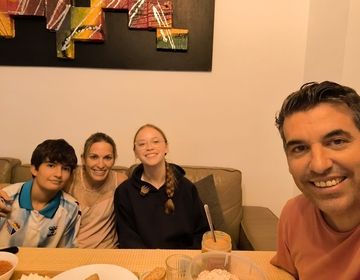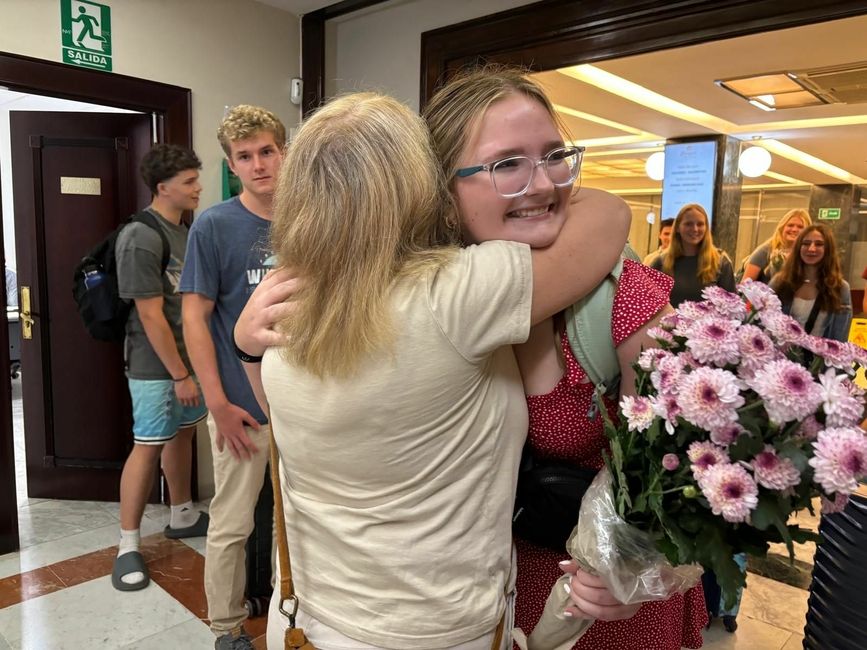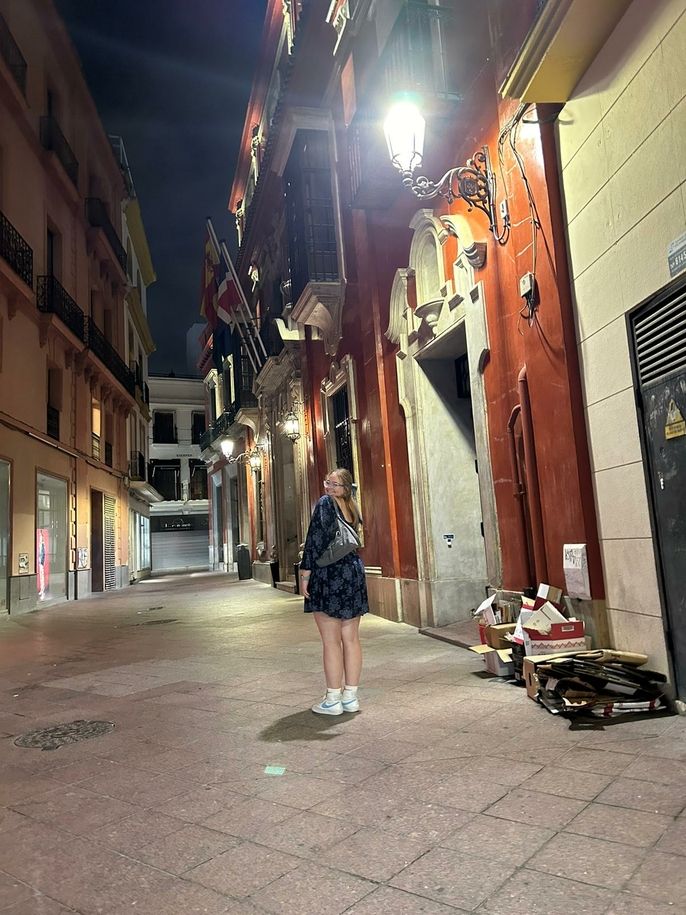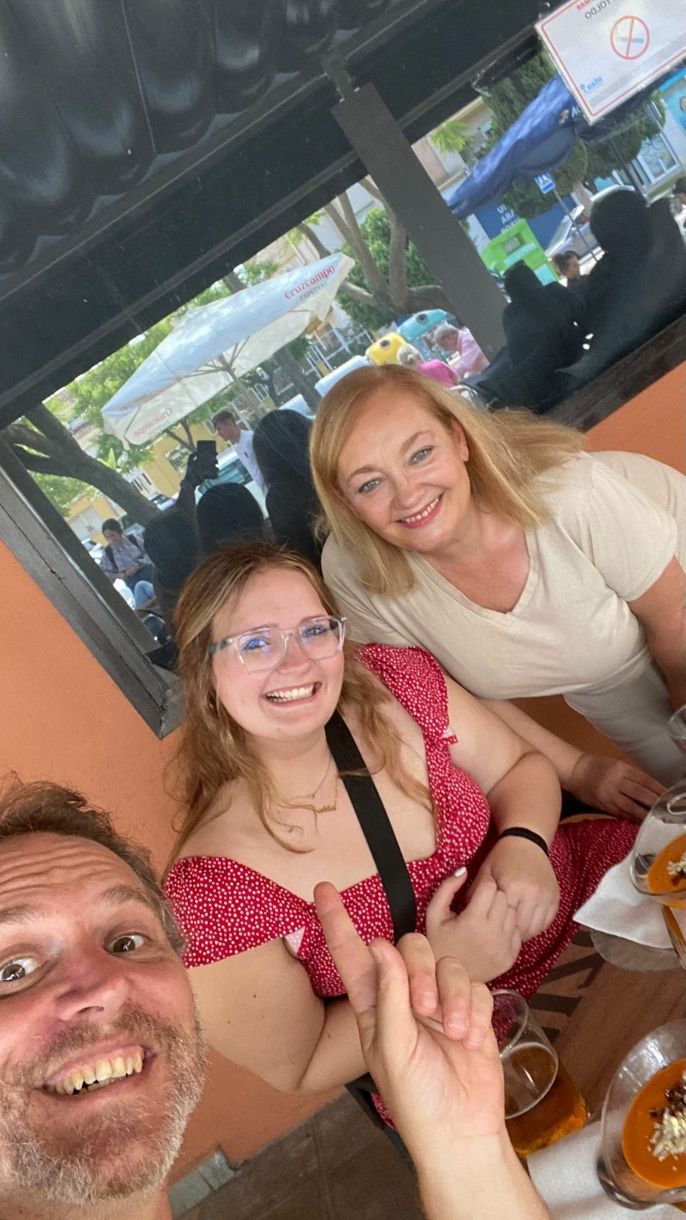Observed Cultural Differences from a Student Currently Abroad
Post written by CIEE Global Ambassador Abbie who is currently participating in CIEE’s High School Abroad Program in Spain. In this blog, Abbie shares her experiences studying abroad in Seville, Spain, highlighting cultural differences in mealtimes, school routines, greetings, and public displays of affection, while reflecting on her personal growth and independence.
A Little About Me!
My name is Abbie Thom and I am from Minnesota. I choose to study abroad for the fall of 2024 in Seville, Spain during my junior year of high school. Studying abroad is the experience of a lifetime for me! From the process of obtaining a visa, to attending school in another country, to going out with new Spanish friends, to spending time with my host family – it's been a whirlwind experience. These times have been so fun to experience and to share. I have already learned so much from this experience, not only expanding my knowledge of the Spanish language and culture but learning about independence and myself!
Food and Mealtime Schedules
For many people, mealtimes in the US are far different than in Spain. In the States, we generally eat breakfast at home around 8am, lunch at school around 11am-noon, and dinner, our biggest meal, around 5-7pm. In Spain, breakfast is also before school, usually consisting of a piece of toast or a piece of fruit. Lunch occurs at around 3pm and is the biggest meal of the day. Dinner is between 10pm and midnight and in a lighter meal to get you through the night.
While a bit different than both Spain and the US, fellow study abroad students report that in France, breakfast is usually a piece of toast and coffee before school around 7-8am, lunch is a decent sized meal around 12-1:30pm, and dinner, the biggest meal of the day, is around 8-9pm. Even though you may think that eating at different times or eating different quantities of food may not stand out as a notable difference, it’s a change that takes some time to adjust to if your body is accustomed to a certain schedule.
School and Education
At my high school in Minnesota, we change classrooms for different classes throughout the day (about every hour). This change of rooms also, typically, means switching the fellow students you see in each class, as well. Additionally, we have the same classes each day of the week. Things at my high school in Spain are quite different. We stay in the same classroom unless we have electives, in which case we go to the classroom for that specific class. Aside from electives, we stay in the same room, with the same students throughout the day, and our class schedules change daily in what is referred to as a “block schedule.” I have also noticed my classes in Spain never seem to be quiet. The students are quite loud whether it’s when the teacher is trying to teach, or the students spontaneously asking questions. This would be considered extremely rude at my school in the U.S.
Peers studying in France also highlight that their schools have general similarities to schools in Spain. One notable practice in French schools is something called “lycée,” which can vary depending on the teacher, but many teachers apply this rule that includes not being allowed to sit at the beginning of class or until the teacher says it's okay to sit.
In speaking with non-European based students studying abroad, I found that schools in Japan are similar to France and Spain in not changing classrooms but, an interesting nuance, for physical education classes, students are split by genders and if you're a girl in physical education you will not have a male in your class. As well as the girls in schools in Japan do not sit “crisscross applesauce” at any time.
Greetings
Greetings in the U.S. are generally understated, usually a simple handshake and a “hey, how are you doing?” and perhaps a hug for family members. In Spain, I have experienced a much more elaborate way of greeting people which usually consists of a kiss on each cheek from women to women or women to men. Usually men will give each other the “man hug.”
As for France they greet people with “les bises” which is the kisses on the cheek and the number of kisses usually depend on the region in which you are in. As Lucy Martin, a fellow study abroad student studying in France explains, “[we] had a workshop to get used to the new way of greeting people and now “it's the way I greet all my friends in the morning before school.”
Expressing your Feelings
I grew up learning it is sometimes better to be polite and to say what someone wants to hear and to “sugar coat it.” For example, if someone made you food and you absolutely hate it you would say “thank you, it is good” even though you think it's absolutely disgusting, but you don't want to hurt their feelings. In Spain, this concept does not seem to exist! During our orientation we were told to tell our host parents how we feel about the food they are giving us and not say it is good when we don't like it.
This approach is similar in France and, as Lucy states, “It is refreshing to hear people say how they feel, and they don't just say it to be kind. In the U.S. a lot of the time you don't know if they are saying it to be nice or if they genuinely mean it.”
Public Display of Affection
When going out with friends on weekends, we go to Seville by taking the Metro and there are a lot of couples who will be hugging and kissing. When we get off the Metro, we will start walking around and we will likely see at least 2 couples kissing per minute of walking. This seems prevalent in my high school, as well. Frankly, it is extremely hard to guess who is dating and who is just friends. Everyone hugs or sits on each other's laps and they kiss each other on the head frequently and, seemingly, if you see one guy kiss a girl on the head, he will have a different girl on his arm the next day! It is very confusing as an American that hasn't seen this level of “PDA” growing up.
In France, according to friends, is very similar to Spain in this regard. Both are very different from my experiences in the U.S. I feel like we are much more reserved in the U.S. and this level of public physicality is generally frowned upon.
Concluding Thoughts
The cultural observations highlighted above are all things other students and I have experienced as the more noticeable, everyday differences, though there are countless others that we experience daily as part of our study abroad experiences! Encountering these differences makes our time with our host families, in our host schools, and in another country so exciting and such a challenge to understand sometimes!
I appreciate the insight and support for this blog entry from the following:
Lucy Martin – Lucy is from Texas and studying abroad in France.
Evelyn Frazier – Evelyn is from California and is studying in Spain.
Holly Dittman – Holly is from Alaska and is also studying in Spain.
Paige – Paige resides in Oregon and is studying abroad in Japan.
Finally, thank you to CIEE for making my semester abroad in Sevilla, Spain a possibility. Your support, knowledge, and coordination are appreciated by all of us.
If you are interested in studying abroad during high school, you can apply here or you can schedule a call with an Enrollment Coordinator to start planning.
Related Posts

How Studying Abroad Changed My Life
This post is student written by Beatrix D. who participated in an High School Abroad Fall Trimester in Spain! I never quite imagined myself eating tomato and garlic rubbed on... keep reading

How My High School Semester Abroad Has Helped Me Become Multilingual
This post was written by CIEE Global Navigator alum Fiona K. from Massachusetts who participated in the Global Navigator Marketing Internship in spring of 2025. "Stand up if you are... keep reading

Why I Left My Small Town in Alaska to Attend High School in Seville
This post was written by CIEE Global Navigator alum Makena D. from Alaska who participated in the Global Navigator Marketing Internship in spring of 2025. Living in a new city... keep reading



